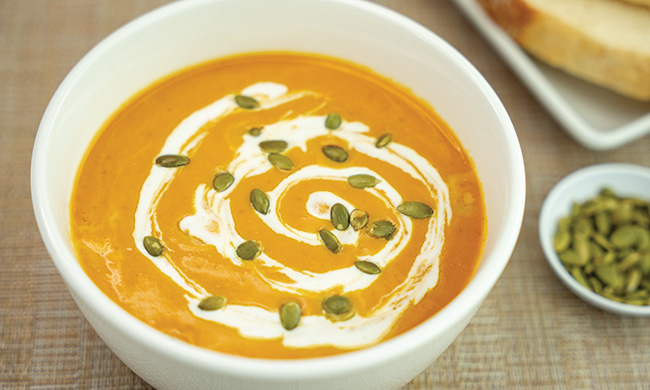Foodie News
TICKETS ARE NOW LIVE FOR THE BOCA RATON’S “ARTISANS OF WINE & FOOD” PRESENTED BY CAPITAL ONE
Napa Valley’s most famous wine event will make its East Coast debut this winter, providing unparalleled access to prestigious winemakers and celebrated chefs from January 17 – 19, 2025
BOCA RATON, Fla. /PRNewswire/ — South Florida’s iconic resort and private club, The Boca Raton, announces tickets are now live for its highly anticipated Artisans of Wine & Food weekend, taking place January 17-19, 2025. The first-of-its-kind event in partnership with the esteemed Napa Valley Vintners will bring together more than 75 winemakers, 20+ celebrated and Michelin-starred chefs, and immersive programming for a celebration of fine wine and food that promises to become a coveted annual tradition. Gourmands can purchase tickets for the event here.
The multi-day experience, presented by Capital One, will be orchestrated by some of the world’s most renowned culinary minds such as legendary Chef David Breeden, famed Chef and Restaurateur Mario Carbone, and a dinner curated by an all-female line-up of top chefs matched with female-owned wineries/winemakers.
The weekend culminates with a gala where attendees will indulge in a four-course dinner artistically directed by Fabio Trabocchi, Michelin-Starred Chef and Restaurateur of Washington DC’s Fiola and Boca Raton’s Fiolina Ristorante. As the evening unfolds, guests will have the opportunity to bid on fine wines, luxury experiences, and bespoke getaways, in an exclusive auction hosted by international auctioneer Jacqueline Towers-Perkins.
“For the first time, we’re bringing the heart of Napa Valley to the East Coast in an unprecedented showcase of wine and culinary talent,” said Daniel A. Hostettler, President & CEO of The Boca Raton. “It’s a privilege to host these celebrated vintners and chefs, and we’ve crafted an extraordinary event for Club members and hotel guests to toast to a truly worthy cause.”
The wine auction’s proceeds will benefit the Boys & Girls Clubs of Palm Beach County and Napa Valley. This charitable initiative highlights The Boca Raton’s dedication to supporting local neighborhoods and investing in youth development through educational and enrichment programs.
SCHEDULE HIGHLIGHTS INCLUDE:
Friday, January 17
- Choose from a series of exclusive dinners hosted by celebrated vintners of Napa Valley:
- The Great Cabernets of Napa Valley four-course dinner will showcase a modern interpretation of a chophouse menu with big bottle cabs, featuring Chefs Will Cox of The Boca Raton, Nathan Rich of Twin Farms, Chris Huerta of Old Edwards Inn, and Adam Young of Sift Bake Shop.
- At Bella Notte, dine like family during an Italian feast by James Beard Award-winning Master Chef Mario Carbone of Michelin-starred restaurants Carbone and ZZ’s Clam Bar.
- Dinner En Plein Air is curated by female vintners and Relais & Châteaux chefs, Jennifer Backman of The Inn at Castle Hill, Sarah Steffan of Blackberry Farm, and Lindsay Autry of Honeybelle – PGA National, with a dessert course by Pastry Chef Jessica Quiet of Ocean House.
- The Premiere Napa Valley Dinner offers a barrel tasting of Napa Valley’s rarest micro-lot wines, an opportunity to select and wear Lugano Diamonds during the tasting, and indulge in a multi-course menu by Michelin-starred Chef Stéphane Andrieux of Château de la Treyne and Sebastien Feneyrol of The Boca Raton.
- A Culinary Celebration of Caviar dinner with Executive Chef Edgar Panchernikov boasts dishes from the world’s only Michelin-starred caviar house Caviar Russe.
- Icons of Napa Valley offers an intimate, al fresco dining experience showcasing exceptional Napa Valley wines with menus prepared by Chef David Breeden, former Chef de Cuisine at The French Laundry–a role he held for nearly 20 years.
- Latin Flavors four-course dinner by Chef Adriano Venturini of Eden Roc Cap Cana, a Relais & Châteaux resort in the Dominican Republic.
- An Argentine Asado BBQ served on The Boca Raton’s fairway, features food stations and dishes using traditional asado techniques and modern twists, live music, and single-site wines.
- The Great Cabernets of Napa Valley four-course dinner will showcase a modern interpretation of a chophouse menu with big bottle cabs, featuring Chefs Will Cox of The Boca Raton, Nathan Rich of Twin Farms, Chris Huerta of Old Edwards Inn, and Adam Young of Sift Bake Shop.
- An Artisans After Hours event presents chef-curated hors d’oeuvres, alongside premium wines and music by Vintner and DJ Jason Lede. Close out the day in style while mingling with winemakers and celebrated chefs.
Saturday, January 18
- Vintners Invitational Golf Tournament: Play side by side with vintners and chefs for prizes provided by Bugatchi and TaylorMade, complete with continental breakfast at The Boca Raton Golf Club.
- Winemaker Series: Seven different intimate educational tastings led by Napa Valley’s renowned winemakers and vintners. Take part in discussions that spotlight the unique terroir and signature wines of the region, featuring BOND Wine, Groth Vineyards & Winery, Oakville, among several others. Topics include Mountain vs. Valley Floor, a Riedel performance tasting, wine & caviar pairings, and more.
- The Discover Napa Valley Tasting Pavilion featuring more than 125 world-class wines and over 20 restaurants: Guests can drift through the tented Grand Lawn and relish in great sips and decadent tastings along the way.
- Modern Meritage on the Spanish Terrace: 12 celebrated chefs prepare their personal favorite burger recipes paired with craft beer in an al fresco setting.
- Yacht Tour of Lake Boca: Enjoy a one-hour charter on open water accompanied by a vintner for relaxed and intimate conversations while indulging in world-class wines.
- Sip & Shop with Worth Avenue: Sip on sparkling wine and rosé while browsing through the collection of six high-end boutiques from Palm Beach’s famed Worth Avenue. Boutiques include Brioni, Carolina Herrera, Anne Fontaine, among others.
- Artisans of Wine & Food Charity Auction and Gala featuring a four-course dinner directed by Fabio Trabocchi, Michelin-Starred Chef and Restaurateur of Washington DC’s Fiola and Boca Raton’s Fiolina Ristorante: Bid on artisan-crafted bottles, luxurious delights, and bespoke getaways. Auction led by globally-recognized auctioneer Jacqueline Towers-Perkins, with proceeds benefiting the Boys & Girls Clubs of Palm Beach County and Napa Valley.
Sunday, January 19
- To the South with Love is a Southern brunch experience hosted by International BBQ Entertainer Jack Arnold and a curated selection of Palm Beach restaurants. Delight in a final send-off, complete with live jazz music, and a sparkling wine bar.
Stay up to date on news and developments at ArtisansofWineandFood.com. Follow along on social media @artisansofwineandfood.
The Boca Raton
The Boca Raton originally opened in 1926 as The Ritz-Carlton Cloister Inn. In the 2020s, it celebrates its most remarkable evolution and its 100th anniversary. The property provides year-round escape, exclusively for members of The Boca Raton Club and resort guests. Five hotels amid 200 waterfront acres include Cloister, Yacht Club, Beach Club, Tower, and Bungalows. The unveiling of Beach Club in December 2024 marks a major milestone in The Boca Raton’s storied history, serving as Phase II of the resort’s transformation. The Boca Raton’s culinary offerings showcase a world of flavor, with signature restaurants in partnership with Major Food Group. Resort amenities include a private beach, the Forbes Five-Star Spa Palmera, an 18-hole golf course, a full-service marina, Racquet Club with 14 tennis courts and 12 pickleball courts, retail shops, seven swimming pools, and various water activities at Harborside Pool Club, state-of-the-art fitness clubs and wellness collaborations. For reservations, call (561) 447-3000 or visit TheBocaRaton.com.
Capital One
At Capital One, we’re on a mission for our customers – bringing them best-in-class products, rewards, service, and experiences. Capital One is a diversified bank that offers products and services to individuals, small businesses, and commercial clients. We use technology, innovation, and interaction to provide consumers with products and services to meet their needs. Through Capital One Dining and Capital One Entertainment, we provide our rewards cardholders with access to unforgettable experiences in the areas they’re passionate about, including dining, music, sports and the arts. Learn more at capitalone.com/dining and capitalone.com/entertainment.
About the Napa Valley Vintners
The Napa Valley Vintners nonprofit trade association has been cultivating excellence since 1944 by inspiring its nearly 550 members to consistently produce wines of the highest quality, provide environmental leadership and care for the extraordinary place they call home. NVV has invested more than $230 million in community healthcare, youth development and the environment in Napa County, and is dedicated to improving diversity and championing inclusivity in its community and in the wine industry. Learn more at napavintners.com.
SOURCE The Boca Raton
At our core, we at STM Daily News, strive to keep you informed and inspired with the freshest content on all things food and beverage. From mouthwatering recipes to intriguing articles, we’re here to satisfy your appetite for culinary knowledge.
Visit our Food & Drink section to get the latest on Foodie News and recipes, offering a delightful blend of culinary inspiration and gastronomic trends to elevate your dining experience.
Discover more from Daily News
Subscribe to get the latest posts sent to your email.
Food and Beverage
Unwrap the Holidays: Whataburger Launches 12 Days of Whatacheer With Daily App Deals
Celebrate the holidays with Whataburger’s 12 Days of Whatacheer! Discover daily in-app deals, exclusive to Rewards members, from December 12–23. Unwrap new menu favorites, BOGO offers, and festive savings—only on the Whataburger App.
12 Days of Whatacheer: Festive Deals for Rewards Members
How It Works
- Who: Whataburger Rewards members (sign up in the app if you’re not already!)
- When: December 12–23, with a new offer every day
- How: Open the Whataburger App, claim the day’s deal, and enjoy with your next order
Holiday-themed graphic reading ‘12 Days of WhataCheer’ on a red background with white dots. Below the text are images of Whataburger menu items: a Cinnamon Roll, Onion Rings, a Whataburger, a Whatafresher, a Honey Butter Chicken Biscuit, and a Strawberry Shake.
Why Join the Whataburger Rewards Fun?
Get Started
Discover more from Daily News
Subscribe to get the latest posts sent to your email.
Recipe of the Week
Holiday Desserts Just Got a Dairy-Forward Upgrade
Holiday Desserts: From festive cookies to indulgent dips, these delicious desserts bring people together to create memories that will last a lifetime. If you’re looking to impress guests, Santa Cookies are the ultimate treat. For a unique twist, try Gingerbread Dip, featuring vanilla Greek yogurt made with 100% grass-fed organic milk.
Last Updated on December 17, 2025 by Rod Washington

Holiday Desserts Just Got a Dairy-Forward Upgrade
(Family Features) Holiday desserts set the stage for seasonal delight and add a touch of joy to gatherings. From festive cookies to indulgent dips, these delicious desserts bring people together to create memories that will last a lifetime. If you’re looking to impress guests, Santa Cookies are the ultimate treat. Made with Maple Hill Salted Butter, they’re rich, soft and full of festive spirit. For a unique twist, try Gingerbread Dip, featuring vanilla Greek yogurt made with 100% grass-fed organic milk. Whether you’re hosting or deciding what to bring to the potluck, Maple Hill’s 100% grass-fed organic dairy makes it easy to whip up desserts that are as wholesome as they are delicious. Rich in nutrients and free from GMOs, hormones and antibiotics, each product comes from farms that prioritize regenerative practices as nature intended. With a 40% healthier ratio of omega 3:6 and 40% higher levels of CLA fatty acids compared to traditional organic dairy, you can feel good about sweet treats at the holiday table. To find more recipes, visit MapleHill.com.
Santa Cookies
Yield: 14 cookies- 1 cup (2 sticks) Maple Hill Salted Butter, at room temperature
- 1/2 cup brown sugar
- 1 tablespoon vanilla extract
- 1 large egg, at room temperature
- 2 1/4 cups all-purpose flour
- 1/4 teaspoon salt
- 1 teaspoon red food coloring
- mini chocolate chips
- mini red chocolate-coated candies
- 1/2 cup (1 stick) Maple Hill Salted Butter, at room temperature
- 4 ounces cream cheese, at room temperature
- 1 teaspoon vanilla extract
- 2 1/2 cups powdered sugar
- Preheat oven to 350 F and line two baking sheets with parchment paper.
- In large mixing bowl, beat butter, sugar and vanilla until light and fluffy. Add egg and beat until combined. Add flour and salt; mix until dough begins to form ball.
- Remove 1 cup dough and set aside. Add red food coloring to remaining dough.
- From red cookie dough, make one 1-inch ball and five 1/2-inch balls. From plain cookie dough, make one 3/4-inch ball and five 1/4-inch balls.
- On prepared baking sheet, place red 1-inch ball and gently flatten until 1/2-inch thick. Attach four red 1/2-inch balls for arms and legs. Attach plain 3/4-inch ball for head and gently flatten until 1/2-inch thick. Attach plain 1/4-inch balls for hands and feet. Shape remaining red 1/2-inch ball into triangle for hat and attach. Repeat with remaining dough, arranging cookies 2 inches apart on baking sheet. Add chocolate candies for eyes and buttons.
- Bake 12-15 minutes, or until lightly golden.
- To make frosting: In medium bowl, beat butter and cream cheese until light and fluffy, about 3 minutes. Add vanilla and powdered sugar; mix until combined.
- To decorate: Place half of frosting in piping bag with small tip to line Santa’s arms and legs. Place other half in second piping bag with small star tip to add Santa’s beard, hat and hands. Put small dot of icing between eyes and beard and place red mini chocolate-coated candy on face for nose.

Gingerbread Dip
Servings: 8-12- 4 ounces cream cheese, at room temperature
- 1/4 cup brown sugar
- 1/4 cup powdered sugar
- 3 tablespoons molasses
- 1 container (16 ounces) Maple Hill Vanilla Greek Yogurt
- 1 teaspoon ground ginger
- 1 teaspoon ground cinnamon
- 1 teaspoon ground nutmeg
- 2 cups whipped cream
- graham crackers
- fruit
- In medium bowl using electric mixer on medium speed, beat cream cheese and sugars about 1 minute. Add molasses and mix until combined.
- Add Greek yogurt, ginger, cinnamon and nutmeg; beat until combined. Fold in whipped cream and mix until fully incorporated. Refrigerate 1 hour before serving or overnight.
- Serve with graham crackers and fruit.
At our core, we at STM Daily News, strive to keep you informed and inspired with the freshest content on all things food and beverage. From mouthwatering recipes to intriguing articles, we’re here to satisfy your appetite for culinary knowledge.
Visit our Food & Drink section to get the latest on Foodie News and recipes, offering a delightful blend of culinary inspiration and gastronomic trends to elevate your dining experience. https://stmdailynews.com/food-and-drink/
Discover more from Daily News
Subscribe to get the latest posts sent to your email.
Food and Beverage
Usher in Cool Weather with Easy Pumpkin Soup
Pumpkin may be a classic fall flavor, but there’s no reason you can’t satisfy your craving for savory comfort foods all year long. Its smooth, creamy texture is a go-to ingredient for a variety of recipes, including this heartwarming and simple easy Pumpkin Soup.

Usher in Cool Weather with Easy Pumpkin Soup
(Family Features) Pumpkin may be a classic fall flavor, but there’s no reason you can’t satisfy your craving for savory comfort foods all year long. Forget spiced latte; with its wholesome nutrition and plenty of earthy flavor, pumpkin is the perfect ingredient for all kinds of flavorful dishes. It may inspire a warm, fall feeling but it’s much more than a seasonal product. Pumpkin puree can be enjoyed all year long mixed into your favorite baked goods, stirred into chilis or even scooped into your morning smoothie. The smooth, creamy texture of Green Giant 100% Pure Pumpkin, made in the United States with premium quality in mind, is a go-to ingredient for a variety of recipes, including this heartwarming and simple Pumpkin Soup. Simply simmer the pumpkin puree with coconut cream, vegetable stock, garlic and ginger for a soup that is comfort in a bowl. Explore new ways to enjoy seasonal recipes at greengiantvegetables.com.Watch video to see how to make this recipe!
 Pumpkin
Soup Cook time: 10 minutes
Servings: 4
Pumpkin
Soup Cook time: 10 minutes
Servings: 4- 1 can (15 ounces) Green Giant 100% Pure Pumpkin
- 1/2 cup coconut cream
- 1 cup vegetable stock
- 1 tablespoon garlic paste or 1 teaspoon garlic powder
- 1 tablespoon ginger paste or 1 teaspoon ground ginger
- salt, to taste
- pepper, to taste
- coconut rice, for serving (optional)
- bread, for serving (optional)
- In saucepan over medium heat, combine pumpkin, coconut cream, vegetable stock, garlic, ginger and salt and pepper, to taste. Stir until well incorporated, cook 10 minutes.
- Serve over coconut rice or with bread, if desired.
The fate of Lucky Supermarkets in SoCalLink: https://stmdailynews.com/the-fate-of-lucky-supermarkets-in-socal/
Discover more from Daily News
Subscribe to get the latest posts sent to your email.

